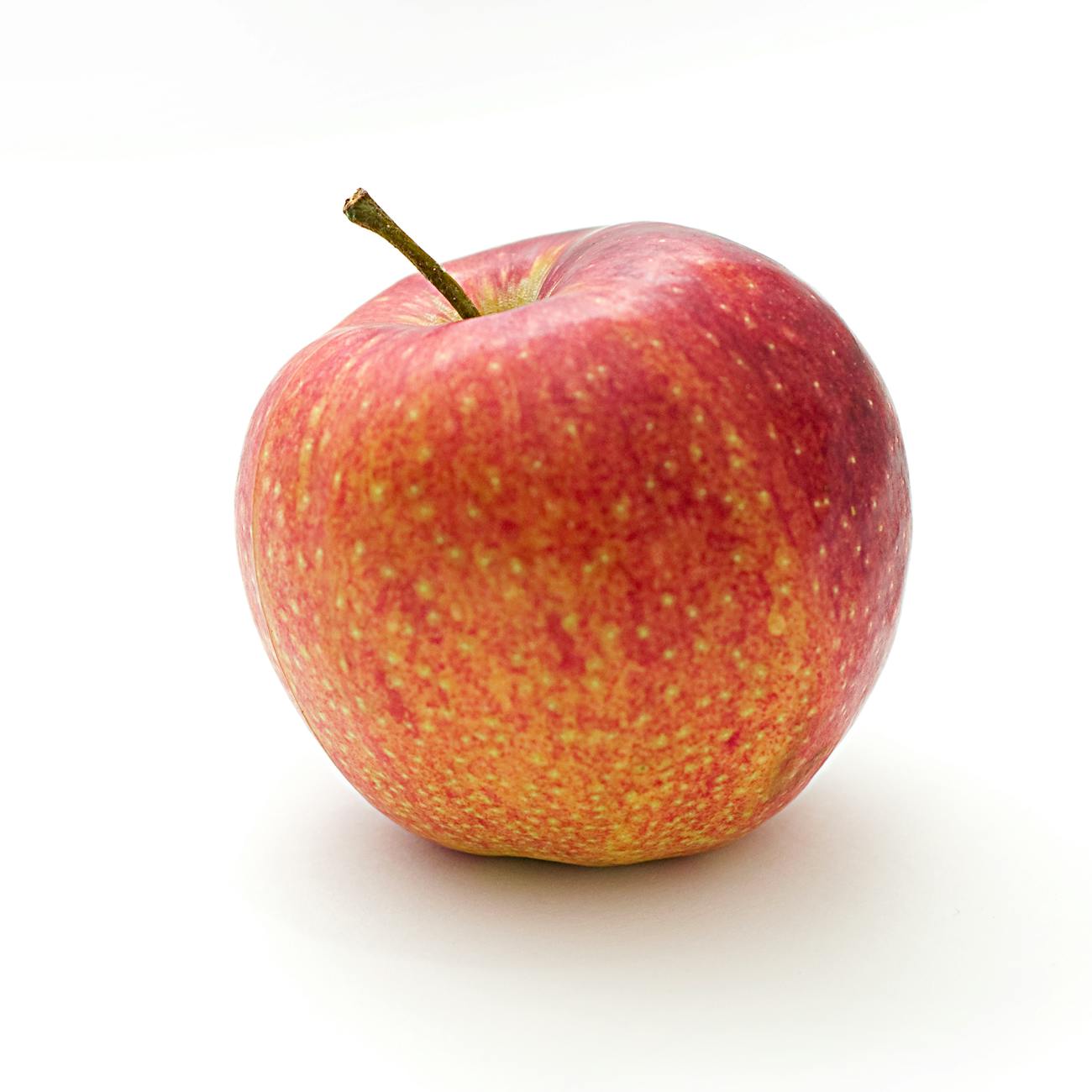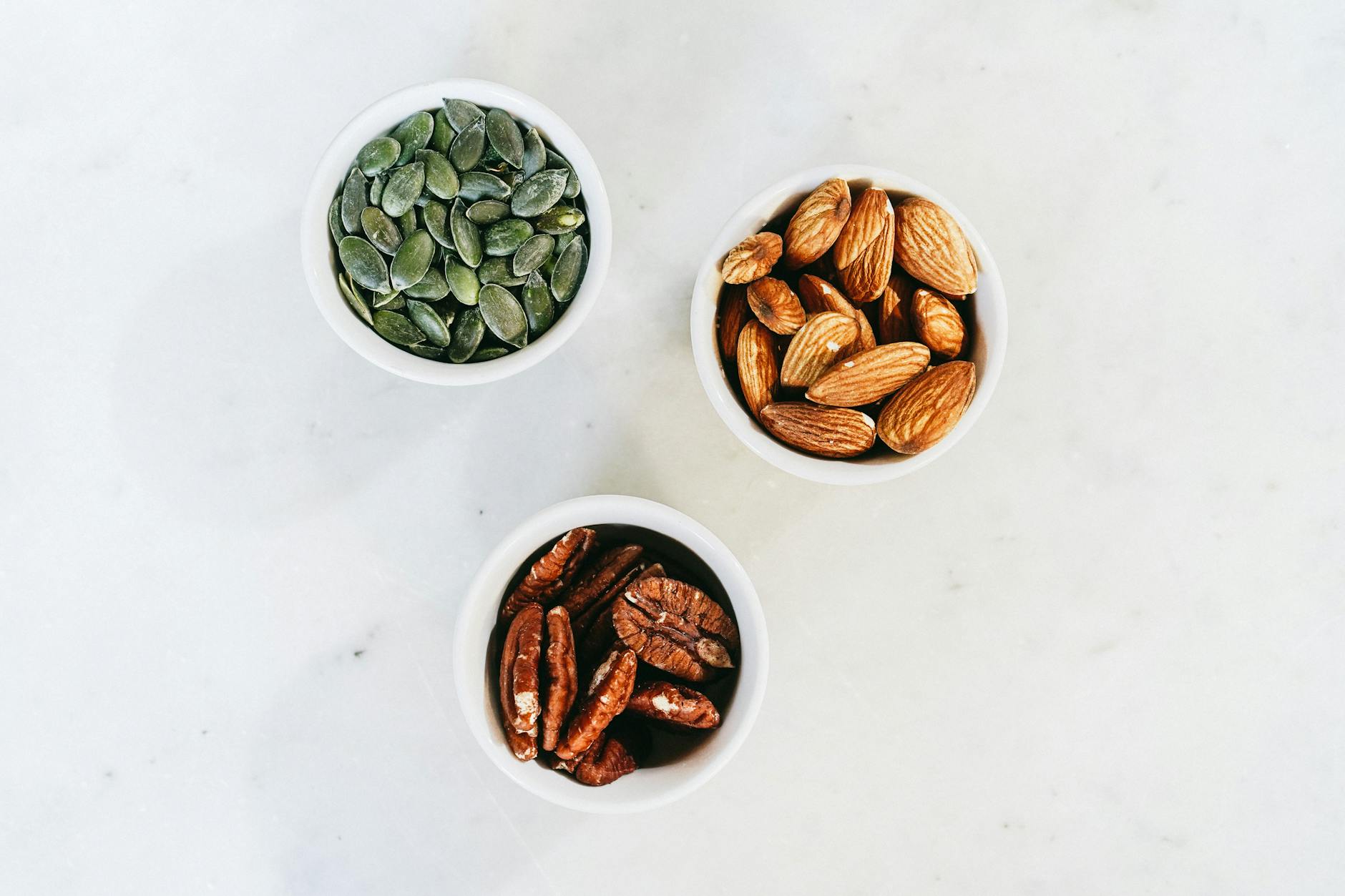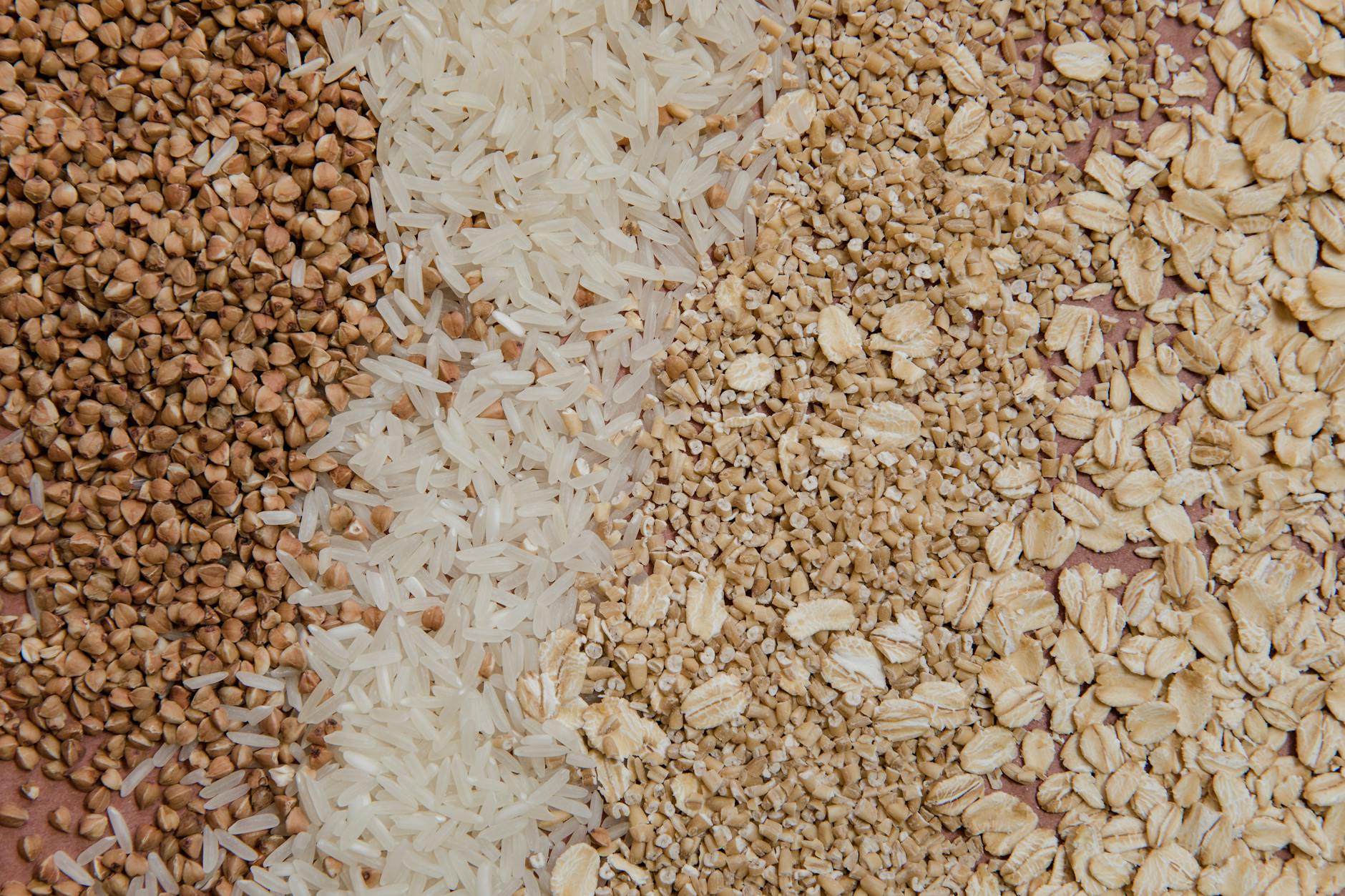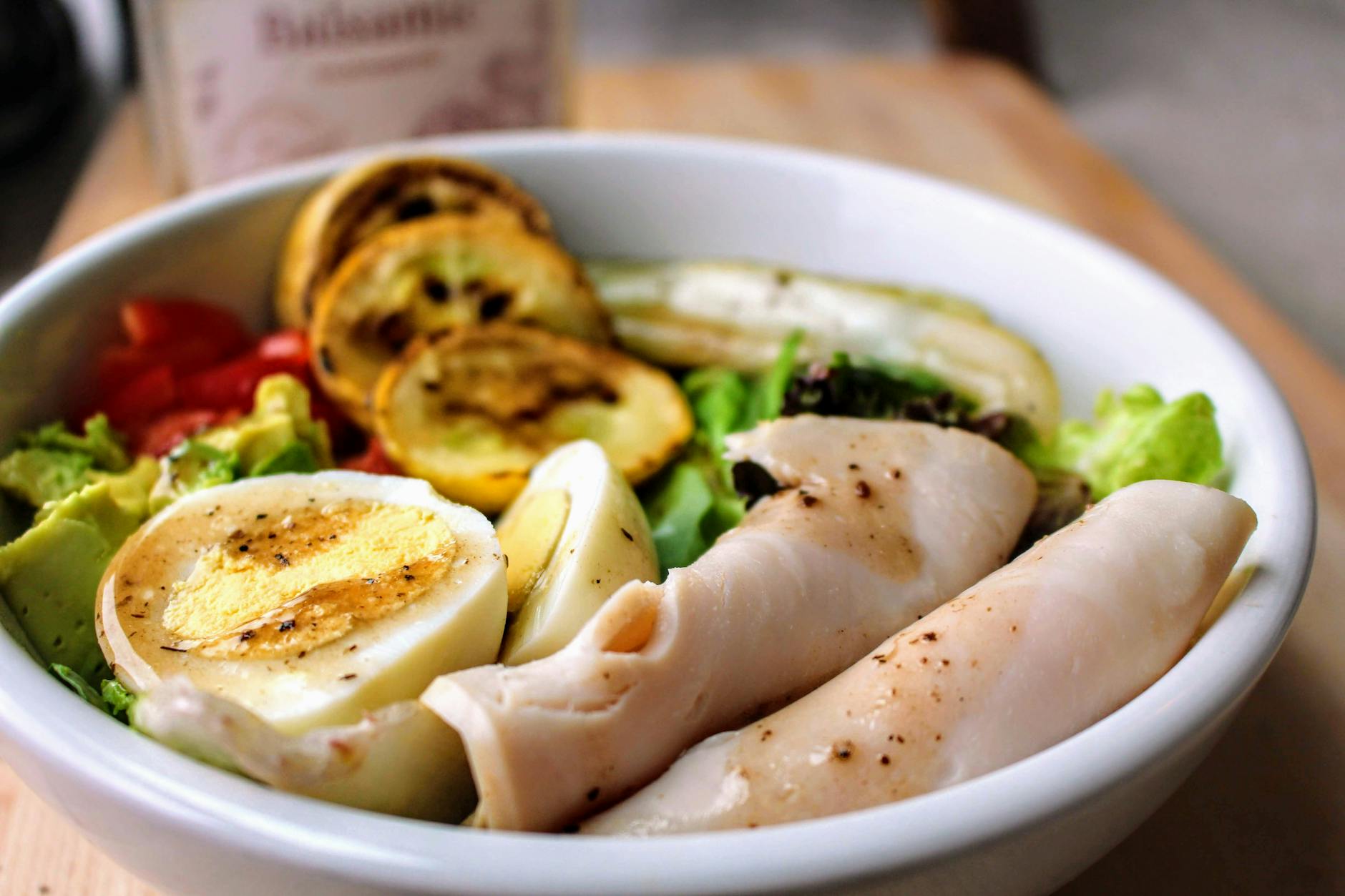Imagine eating the way our ancestors did thousands of years ago. That’s the idea behind the Paleo diet. Focused on whole, unprocessed foods, it’s based on what hunter-gatherers might have eaten. Over time, it’s gained popularity for its simplicity and health benefits. In this post, we’ll break down its origins, key principles, and why it’s caught so much attention.
Understanding the Paleo Diet
The Paleo diet has gained significant attention in recent years, but it’s not a new concept. At its core, it’s about getting back to basics — eating as humans did long before processed foods became part of our daily lives.
Historical Background of the Paleo Diet

Photo by JJ Jordan
The Paleo diet takes its inspiration from the Paleolithic era, which spanned approximately 2.5 million to 10,000 years ago. During this time, early humans were hunters and gatherers. They relied on nature for food, consuming what was readily available — wild animals, fish, fruits, vegetables, nuts, and seeds. Agricultural advancements, like farming and cultivating grains, only emerged much later, introducing processed foods into human diets.
Dr. Walter Voegtlin was one of the pioneers of the modern Paleo diet concept in the mid-20th century, followed by researchers like Dr. Loren Cordain, who studied nutritional anthropology and proposed that replicating ancestral dietary patterns could address modern health issues. This idea caught on, leading to today’s Paleo movement. Explore more about its historical roots here.
By looking at how our ancestors ate, proponents believe we can better align our diets with what our bodies are naturally designed to handle. Isn’t it fascinating to think that our evolutionary history could hold clues to healthier living?
Core Principles of the Paleo Diet
The Paleo diet is built on a straightforward premise: eat whole foods and avoid anything processed or refined. But what exactly does that entail? Let’s break it down:
- Foods to Eat:
- Lean meats: Grass-fed beef, chicken, turkey, and other naturally raised meats.
- Fish: Especially ones high in omega-3 fatty acids like salmon and mackerel.
- Fruits and vegetables: Vibrant, nutrient-dense options are encouraged.
- Nuts and seeds: A great source of healthy fats and protein.
- Healthy oils: Stick to olive, coconut, and avocado oils.
- Foods to Avoid:
- Dairy products like milk and cheese.
- Grains, including wheat, rice, and corn.
- Legumes such as soy, lentils, and peanuts.
- Refined sugars and artificial sweeteners.
- Processed foods and anything with additives.
The essence of Paleo revolves around consuming foods similar to what could have been hunted or gathered during the Paleolithic era. Think natural, unprocessed, and loaded with nutrients. Here’s more on the diet’s core principles.
Why does this matter? Advocates claim that modern health problems, like obesity and diabetes, stem from the drastic dietary shifts brought about by agriculture and food processing. By eating as our ancestors did, they believe we can reduce inflammation, improve digestion, and boost overall health.
In the Paleo world, food is more than fuel — it’s a way to reconnect with our roots. Have we been too far removed from what our bodies truly need?
Foods Included in the Paleo Diet
In the Paleo diet, the focus is entirely on natural, unprocessed foods, much like what our ancestors might have foraged or hunted for. Let’s take a closer look at the core food categories embraced by this diet.
Fruits and Vegetables

Photo by Suzy Hazelwood
The Paleo diet prioritizes fresh fruits and vegetables as essential components. These are packed with vitamins, fiber, and antioxidants, making them a powerhouse for health. Unlike modern diets, which often rely on sugary or processed foods, Paleo encourages us to eat:
- Fruits: Apples, berries, melons, oranges, and mangos. Essentially, any naturally sweet fruit is allowed.
- Vegetables: Leafy greens like spinach and kale, starchy tubers like sweet potatoes, cruciferous veggies like broccoli and cauliflower, and virtually any non-legume vegetable.
By including a colorful array of fruits and vegetables, we gain nutrients essential for energy and immune health. A handy tip? Prioritize seasonal and organic produce for maximum nutritional value. Learn about the importance of eating fruits and vegetables on Paleo diets.
Meat and Seafood
Proteins take center stage in the Paleo diet, with an emphasis on ethically raised, high-quality sources. This is about ditching processed deli meats and instead focusing on options closer to nature.
- Meats: Grass-fed beef, free-range chicken, turkey, and pork are all staples. The idea is to mimic what early humans hunted. Industrial farming practices change the nutrient profile, so quality matters.
- Seafood: Wild-caught fish like salmon, mackerel, and trout are preferred choices due to their Omega-3 content. Shellfish, such as shrimp and crab, also add diversity to meals.
Access to sustainable and organic options not only reflects Paleo principles but also supports a more eco-friendly food system. Dive deeper into Paleo-approved meat and seafood suggestions.
Nuts and Seeds

Photo by Antoni Shkraba
Nuts and seeds are excellent snacks for those on the go and provide a quick boost of healthy fats. However, they must be consumed in moderation, as they are calorie-dense. Paleo allows:
- Nuts: Almonds, walnuts, cashews, and pecans. These are nutrient-rich, delivering protein and good fats.
- Seeds: Sunflower, pumpkin, and sesame seeds. These small but mighty additions are great for salads or snacks.
It’s worth noting that peanuts are excluded since they’re technically legumes and not true nuts. When reaching for nuts and seeds, raw and unsalted varieties are the way to go. Find a comprehensive guide to Paleo-friendly nuts and seeds here.
Oils and Fats
Healthy fats and oils play a crucial role in this diet, replacing the trans fats and refined oils found in heavily processed foods. Paleo embraces:
- Plant-based oils: Coconut oil, avocado oil, and olive oil are loaded with beneficial fatty acids.
- Animal fats: Tallow and lard, sourced from grass-fed animals, are also Paleo-approved.
These oils are not only Paleo-compliant but are known for their high smoke points, making them ideal for cooking. The emphasis is on fats that align with natural sources available to our ancestors. Explore the best oils for the Paleo diet here.
Each of these categories contributes something unique to the Paleo approach: vibrant nutrients, sustained energy, and better health. From the first bite of a juicy apple to a perfectly cooked piece of salmon, it’s all about celebrating what real food has to offer.
Foods to Avoid in the Paleo Diet
When following the Paleo diet, there’s a significant emphasis on eating as naturally as possible. It’s not just about what you eat but also what you avoid. Let’s explore the key food categories that don’t make the cut and why they’re excluded.
Processed Foods: Why They’re Not Paleo
Processed foods are the antithesis of the Paleo lifestyle. These products are loaded with artificial ingredients, preservatives, and additives that our ancestors wouldn’t have encountered. Think of items like chips, candy, or sugary drinks.
Processed foods often contain:
- Refined sugars that contribute to blood sugar spikes.
- Chemical preservatives for extended shelf life, which can disrupt gut health.
- Artificial sweeteners and flavors that aren’t natural to the human diet.
Our bodies thrive on whole, unprocessed foods because they deliver nutrients in their most bioavailable form. The artificial compounds in processed foods can trigger inflammation and lead to chronic health issues over time. Read more about the dangers of processed foods in relation to Paleo principles.
Grains and Legumes: Understanding Their Exclusion

Photo by RDNE Stock project
Grains and legumes are staples in many modern diets, so why are they excluded from Paleo? These foods contain anti-nutrients like phytic acid and lectins, which can interfere with nutrient absorption and digestion. Additionally:
- Grains like wheat, rice, and barley are high in carbohydrates, which can disrupt blood sugar levels.
- Legumes, including beans, lentils, and soy, contain protease inhibitors, which hinder protein digestion.
For Paleo advocates, it comes down to bioavailability. Many believe grains and legumes contribute to the “modern” dietary issues our ancestors didn’t face. The argument is clear: if it wasn’t part of hunter-gatherer life, it’s not part of the diet. Curious about more specifics? Here’s a deeper dive into why grains and legumes don’t fit the Paleo mold.
Dairy Products: The Paleo Controversy
Dairy occupies a unique gray area in the Paleo community. While traditional Paleo diets exclude dairy entirely, some modern interpretations allow grass-fed butter or fermented dairy like kefir. Here’s why dairy is avoided:
- Most humans lose the enzyme lactase (required to digest lactose) after infancy, leading to intolerances.
- Dairy can trigger inflammation in some individuals, especially products made from conventional farming methods.
- Our ancestors didn’t milk cows. Dairy is seen as a post-agricultural food source.
That said, not everyone agrees. Some proponents argue that high-quality, organic dairy can have health benefits. Ultimately, its inclusion depends on personal tolerance and dietary goals. Learn more about the evolving views on dairy in the Paleo diet.
In these three categories — processed foods, grains and legumes, and dairy — we see a common thread: keeping the diet as close to nature as possible.
Benefits of the Paleo Diet
The Paleo diet isn’t just about replicating the eating habits of our prehistoric ancestors. Its benefits make it an appealing choice for those seeking to improve health, manage weight, and boost energy. Let’s explore how this diet can transform wellness through its key advantages.
Weight Loss and Management

Photo by Tima Miroshnichenko
One reason people turn to the Paleo diet is its potential for weight loss. By focusing on natural, whole foods and eliminating processed items, the diet inherently reduces extra calories and unhealthy fats.
- High Protein Content: Paleo encourages lean meats and seafood, providing ample protein to keep us full and curb overeating. Protein-rich diets are known to boost metabolism, which can lead to faster fat burn.
- Low in Carbs: Unlike diets involving grains and refined sugars, Paleo is naturally low-carb. This shift helps stabilize blood sugar, reducing cravings and energy dips.
- Eliminates Empty Calories: By cutting out sodas, sugary snacks, and processed junk, we naturally consume fewer unnecessary calories.
Studies have shown that those following a Paleo diet experience significant reductions in body fat and waist size compared to traditional diets. Want to see what the research says? Dive deeper into Paleo and weight loss benefits.
Improved Nutrition and Energy Levels
When it comes to overall health, the Paleo diet places a spotlight on nutrient density. By prioritizing fresh, whole foods, we feed our bodies what they truly need to thrive.
- Rich in Nutrients: Fresh fruits, vegetables, nuts, and seeds provide a daily dose of vitamins, minerals, and fiber. These are critical for immune health, digestion, and sustained energy.
- No Processed Ingredients: Without artificial additives or preservatives, the diet helps reduce the inflammation commonly triggered by modern processed foods.
- Steady Energy: We avoid the highs and lows that often come with sugar-laden meals. Complex carbs from natural sources like sweet potatoes fuel energy smoothly throughout the day.
Many followers rave about feeling mentally and physically sharper after adopting Paleo. It forces us to think about food as fuel, ensuring we give our bodies the best. Here’s more about the nutritional benefits of Paleo.
The Paleo emphasis on clean, wholesome eating offers more than just good health — it’s a way to rediscover how food can fuel happiness and longevity. Why settle for feeling “average” when real food can make us feel extraordinary?
Challenges of the Paleo Diet
While the Paleo diet has its share of benefits, like any lifestyle change, it comes with challenges. From tracking down the right ingredients to navigating social settings, sticking to this diet requires commitment and adaptability.
Accessibility of Paleo Foods

Photo by Foodie Factor
One of the biggest hurdles for many is finding Paleo-friendly foods. Options like grass-fed beef, wild-caught seafood, or organic produce are often pricey and not readily available everywhere. This can make the diet feel out of reach for some people.
Here’s why accessibility makes this diet challenging:
- Cost: Foods like almond flour, coconut oil, or grass-fed meats often come at a premium price.
- Availability: Not everyone lives near stores that carry organic or specialty items. Rural or smaller towns may have limited options.
- Preparation: Without convenient pre-packaged Paleo meals, most dishes require cooking from scratch. This adds time and effort to daily routines.
These factors can be especially overwhelming for beginners. Crafting full meals that fit Paleo standards while sticking to a budget takes planning and determination. For more details, here’s an insightful overview into why accessibility can make or break a Paleo commitment.
Social Situations and Eating Out
Navigating social settings while sticking to Paleo can feel like walking a tightrope. Whether it’s dinner with friends, a work lunch, or family parties, these scenarios often center around non-Paleo foods. How do we maintain balance without feeling isolated?
Here are tips to help:
- Speak Up: Don’t be shy about sharing your dietary preferences. Communicate with your host or waiter to find customized options.
- Plan Ahead: Research menus if dining out. Many restaurants are happy to accommodate requests like substituting bread for extra vegetables.
- Focus on Flexibility: It’s okay to make occasional compromises. Life happens, and one meal won’t undo weeks of progress.
Feeling social pressure or standing out when “everyone else” is opting for pizza or dessert can be tough. But being prepared with strategies goes a long way in meeting your goals. For more advice, check out strategies for sticking to Paleo during social outings.
From finding the right foods to maneuvering social events, these challenges underline just how much planning and focus Paleo requires. But with preparation and flexibility, these obstacles can be managed effectively.
Paleo Diet Alternatives
For those curious about the Paleo diet but looking for some flexibility or variety, there are several alternatives to explore. These dietary options maintain similar principles of focusing on whole, unprocessed foods while offering modifications or unique benefits.
Modified Paleo Diets

Photo by Jenna Hamra
While the traditional Paleo diet focuses strictly on mimicking prehistoric eating patterns, modified versions have emerged for a more tailored approach. The Primal diet, for example, is often mentioned alongside Paleo. It follows a similar framework but allows for certain foods like high-quality dairy and natural sweeteners, such as honey or maple syrup. The goal is to enjoy a more balanced lifestyle without diverging too far from ancestral health principles.
Here are a few key differences between the Primal and standard Paleo diets:
- Dairy: Primal includes raw and fermented dairy products like yogurt and kefir.
- Flexibility with sweeteners: Unlike Paleo, small amounts of natural sweeteners are acceptable.
- Emphasis on lifestyle: Primal also integrates more lifestyle elements, such as sleep and exercise habits.
For some, this added flexibility makes the Primal diet easier to follow long-term. However, it’s important to weigh the pros and cons of loosening dietary restrictions. Curious to learn more? Check out this guide to modified Paleo diets.
Other adaptations of Paleo include the “80/20 rule,” which allows for occasional indulgences in non-Paleo foods while still adhering to the diet most of the time. This relaxed approach emphasizes balance rather than perfection.
Other Low-Carb Diets
Though Paleo is a celebrated low-carb option, it’s not the only one. Comparing it with other popular diets, like Keto, reveals clear similarities and key differences.
Paleo vs. Keto
- Carb restrictions: Keto is significantly stricter, aiming for extremely low carb intake to induce ketosis. Paleo allows for whole-food sources of carbs, such as fruits and sweet potatoes.
- Focus: The Keto diet concentrates on macronutrient ratios (high-fat, very low-carb, moderate protein) to achieve a metabolic state of ketosis. Paleo is more about food quality and ancestral eating habits.
- Exclusions: While both eliminate grains, legumes, and processed foods, Keto restricts even high-sugar fruits and some starchy vegetables that Paleo embraces.
Both diets can support weight loss and improve blood sugar control, but the best fit depends on individual goals. For more insights on how they stack up, see this detailed Paleo vs. Keto comparison.
Other low-carb diets, like Atkins, or the Mediterranean-inspired “Paleo-Med” diet, bring unique twists to eating naturally. The choice often boils down to personal preferences and how rigid or inclusive one wants their diet to be.
For those exploring alternatives, these options provide flexibility while staying grounded in health-focused principles. Which variation feels like the right fit for you?
Getting Started on the Paleo Diet
Adopting the Paleo diet may seem challenging at first, especially if some of your favorite foods are on the “avoid” list. But taking gradual steps can make the transition smoother. Here, we explore practical tips to ease into the Paleo lifestyle and strategies to plan and prepare meals that fit right in.
Tips for Transitioning

Photo by Loren Castillo
When starting Paleo, diving in cold turkey can feel overwhelming, but we don’t have to do it all at once. Here are some actionable ways to smoothly make the switch:
- Start small: Replace processed snacks with Paleo-friendly foods like nuts or fresh vegetables. This subtle shift builds momentum.
- Focus on whole foods: Incorporate more fruits, vegetables, and lean proteins into daily meals.
- Clean out your pantry: Remove non-Paleo items gradually, replacing them with healthier options.
- Experiment with recipes: Trying new Paleo recipes can spark creativity and make the process enjoyable.
- Stock your kitchen wisely: Keep essentials like coconut oil, almond flour, and grass-fed meats handy for quick meals.
Every change adds up, even small ones. Feeling stuck? Here’s a great guide to transitioning to Paleo for more inspiration.
Meal Planning and Preparation
Meal planning is the backbone of sticking to the Paleo diet. Preparing meals in advance saves time, money, and stress. Here’s how we can make it work:
- Plan weekly meals: Create a menu for the week, ensuring breakfast, lunch, dinner, and snacks are Paleo-compliant.
- Batch cooking: Prepare large portions of proteins and vegetables to use throughout the week. For instance, roast a tray of chicken thighs and a mix of veggies to assemble in various meals.
- Paleo-friendly swaps: Replace pasta with spiralized zucchini (“zoodles”) or use cauliflower rice instead of grains.
- Make snacks in advance: Keep items like energy balls made with nuts and dates ready for when hunger strikes.
For a pre-planned approach, check out this helpful 7-Day Paleo Meal Plan for ideas and strategies.
Consistency and planning help build a strong foundation for success. Each week gets easier as we form new habits and find meals we love.
Conclusion and Final Thoughts
Wrapping up on the Paleo diet, it’s clear that this approach reconnects us with simple, whole-food eating. It removes modern processed foods, aiming to align our diet with what our bodies were built to digest. But what does this mean for our overall health and lifestyle?
Takeaways from the Paleo Diet
The Paleo diet focuses on natural, nutrient-rich foods, which can help optimize health and energy levels. By cutting out processed foods, grains, and refined sugars, it encourages us to choose real, whole ingredients. This diet isn’t just a fad—it emphasizes clean eating as a foundation for wellness.
- It’s not restrictive when you explore the variety of allowed foods like fresh vegetables, fruits, meats, and healthy fats.
- It removes common irritants, such as processed foods and sugars, allowing for better digestion and reduced inflammation.
There’s no perfect diet for everyone, but Paleo provides a thoughtful framework. Whether for weight management, improved energy, or overall well-being, it emphasizes food as a tool for health.
Deciding If Paleo Is Right for You
Paleo isn’t necessarily easy; challenges like social situations and food accessibility exist. But for those who can embrace this lifestyle, the benefits seem worth the effort. Transitioning doesn’t demand perfection—starting with small steps can make a big difference.
Looking for more details? Explore what experts say about Paleo’s effectiveness or get insights into the pros and cons of committing to it.
Staying Flexible
Adopting Paleo isn’t about replicating ancient lifestyles to the letter. Modern adaptations give room for experimentation. Some add dairy, while others focus on an 80/20 balance. Personalizing the diet to suit your lifestyle can help make it a sustainable choice.
What’s important is discovering what works for you—something that meets your health goals without feeling restrictive. And if Paleo isn’t the fit you need, there’s always room to explore other whole-food-focused diets.
These ideas position the Paleo diet as more than just a trend—it’s a mindful approach to eating and health. Wherever this journey leads, it’s a reminder that food is both nourishment and a connection to our roots.






